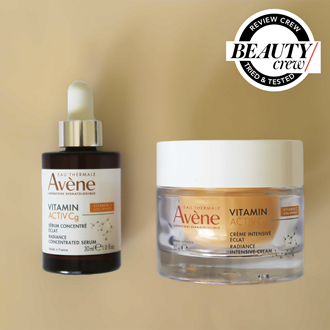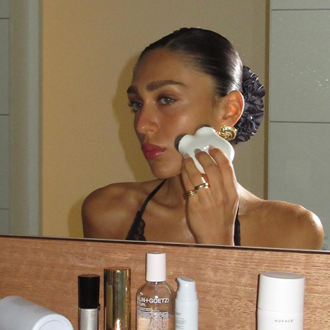Why laser hair removal and a tan don’t mix

By Kate Niven
Beauty Crew Beauty Writer / November 21 2018

Consider yourself warned

By Kate Niven
Beauty Crew Beauty Writer / November 21 2018
Consider yourself warned
If you can’t be bothered to shave your legs every week or can think of nothing worse than waxing, chances are you’ve tried laser hair removal. After all, laser treatments are cheaper and more effective than ever before, and it’s hard to beat its (almost) permanent results. But as with most things, laser hair removal isn’t without its downsides. And there’s no doubt that not being able to have a tan (be it real or fake) several weeks before a treatment is one of the top shortcomings of laser hair removal. Even though we’d never suggest you lay out in the sun with the intention of developing a tan, avoiding one (especially during the summer months) can be a whole lot easier said than done. Add to that not being able to fake tan before a treatment and laser hair removal can start to feel all too much like hard work.
But why is it so important to avoid sun exposure and fake tans before laser treatments? And what exactly happens if you don’t? To find out, we spoke to National Clinician Manager for Cynosure Australia, Sandra Sostres.
How laser hair removal machines work
Laser hair removal treatments work by directing a beam of light or wavelength at the pigment in your hair follicles. That wavelength then converts to heat as it passes through the skin, before being absorbed by your hair’s dark pigment. This absorption damages the follicle enough to prevent future hair growth. Put simply, the thicker and darker the hair – and the greater the contrast between your skin tone and hair colour – the easier it is for light to detect it.
Why you need to avoid a tan before a laser treatment
While lasers work to target the pigment in your hair follicles, most aren’t able to tell the difference between pigmented hairs and pigmented skin. “If the skin in the treatment area is tanned, the energy from the laser will be absorbed into the skin rather than the follicle and burning or discolouration may occur,” explains Sostres. This flaw is also why laser hair removal has typically been reserved for those with darker hair and lighter skin tones.
A tan, regardless of whether it is real or fake, can also make skin more sensitive to the heat emitted during laser hair removal. “Fake tan products can contain chemicals and clog pores, which results in the skin being more reactive if heat is applied to the area”. A similar principal applies for a real tan. “Sun exposure can compromise the skin and make it more sensitive to heat. If the skin has been recently exposed to the sun, the cells activated by the sun seem to react more to laser than if one has a natural darker skin type.”
How long you need to wait after developing a tan
While most laser technicians will recommend you start your treatments at the beginning of the cooler months when your chance of sun exposure is at its lowest, this isn’t always realistic. Sostres’s advice is to avoid sun exposure two to four weeks before a treatment and stop using fake tan at least two weeks prior. She also strongly suggests religiously applying SPF 30+ to any exposed treatment area during the warmer months.
If you do get a tan or have naturally darker skin and still want laser treatments, Sostres recommends choosing a clinic “who has the technology, such as Elite + or Vectus. If you are tanned, the therapist will be able to tailor the treatment and choose the settings and appropriate wavelength for darker skin tones.”
Looking for more hair removal tips and tricks? Then discover everything you need to know about at-home laser hair removal.
Have you tried laser hair removal before? Share your thoughts and experiences with us in the comments below.
Main image credit: @bellahadid






